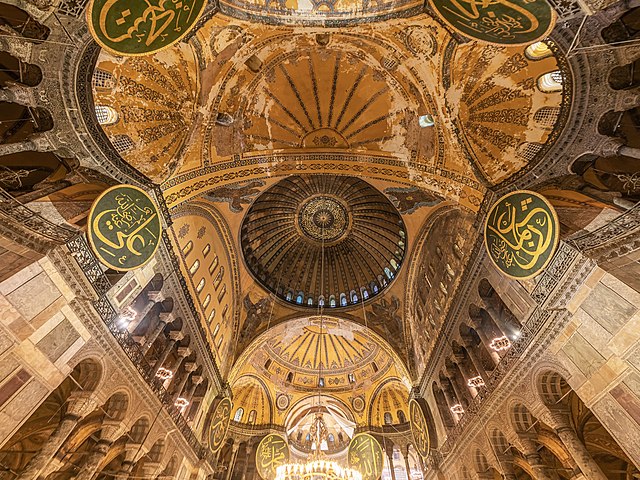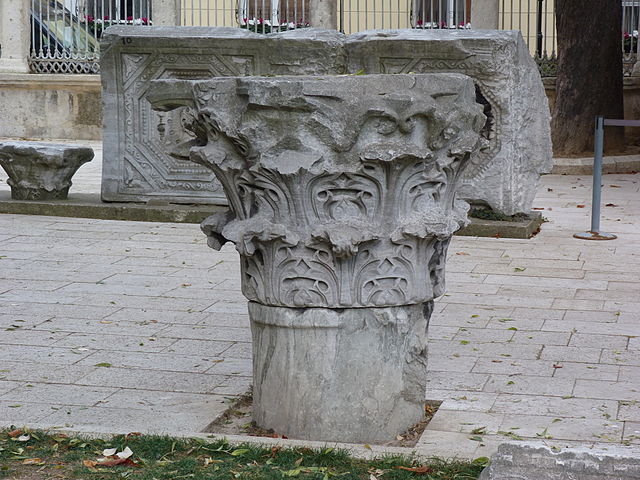The Fossati brothers, Gaspare and Giuseppe (1822–1891), were Swiss architects. They completed more than 50 projects in Turkey during the Tanzimat era. They belonged to the Morcote branch of the Fossati, a prominent Ticinese family with mentions in the historical record going back to the 14th century. Gaspare is most noted for his renovation of the Hagia Sophia in Constantinople, which virtually saved it from destruction.
Gaspare Fossati's 1852 depiction of the Ayasofya Mosque, which he and his brother renovated. Lithograph by Louis Haghe
Consulate (former embassy) of Russia on Istiklal Avenue in Istanbul
Consulate (former embassy) of the Netherlands on Istiklal Avenue in Istanbul
TGC Press Media Museum in Çemberlitaş, Fatih (former Ottoman Ministry of General Education)
Hagia Sophia, officially the Hagia Sophia Grand Mosque, is a mosque, a former church, and a major cultural and historical site in Istanbul, Turkey. The last of three church buildings to be successively erected on the site by the Eastern Roman Empire, it was completed in 537 AD. The site was an Chalcedonian church from 360 AD to 1054, an Orthodox church following the Great Schism of 1054, and a Catholic church following the Fourth Crusade. It was reclaimed in 1261 and remained Eastern Orthodox until the fall of Constantinople in 1453. It served as a mosque until 1935, when it became a museum. In 2020, the site once again became a mosque.
Hagia Sophia Church was built in 537 AD, with minarets added in the 15th–16th centuries when it became a mosque.
Hagia Sophia, Istanbul, Turkey, ca. 1897.
View of the dome interior
Theodosian capital for a column, one of the few remains of the church of Theodosius II








